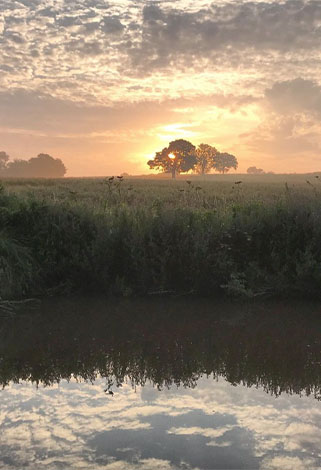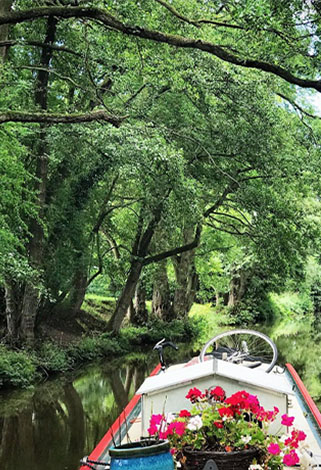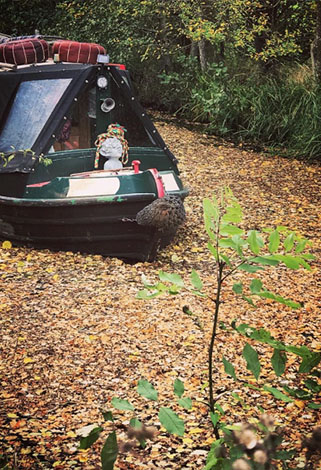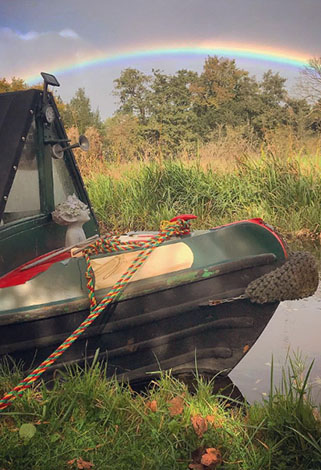MyAlerts!
First of all, a little background.
Canal living is particularly attractive to retirees… as a result, the boating community tends to be significantly older, on average, than the population at large (the latest reliable estimates suggest that, since the turn of the millennium, the mean age of a permanent boater had risen by a little over four years, to 59).
Sadly, the wisdom of age is served with a generous side order of underlying health conditions, ominously referred to in these pandemic times as 'co-morbidities'. A fact that I know all too well!
It gradually dawned on me that, should I become incapacitated in some way, then giving first responders or carers access to my medical information would significantly improve my treatment and prognosis.
My own research revealed that all front line emergency workers (Police, Fire fighters, Paramedics & hospital medical staff etc.) are trained to look in a non-responsive patient's wallet, purse, bag or pockets for medical notifications. They also routinely examine a patient's wrists for 'medical alert' bracelets; silicone wrist bands that are widely available to purchase on the internet from around a fiver or so, and cover a wide variety of conditions and drugs. Unfortunately, these bands only alert to one specific condition or medication.
In my case; I have type 2 diabetes, and take anticoagulants (so called 'blood thinners'), beta-blockers and a vasodilator for a heart condition, so I used to wear four.
I should, in fact, have worn at least one more, but the medications prescribed for that particular condition changed too frequently for my Amazon account to keep up with all of the orders… thank goodness I didn't have any dangerous allergies, or I would have run out of arms! :o)
With a professional background in web software development, I set about designing a better mousetrap, and the result is now available to you as MyAlerts!
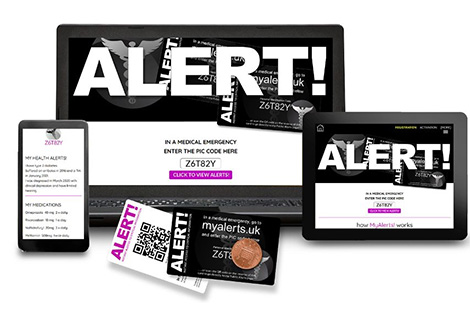
Guaranteed privacy…
When you register online, you'll receive a membership card with a holographic Personal Identification Code (PIC), which gives first responders instant access to your most important medical information on a mobile phone, laptop or tablet, 24 hours a day.
MyAlerts! will never ask for your name, telephone number or email address, and there's no need to worry about anyone guessing your PIC... with 1.6 Billion possible combinations, a hacker would stand a better chance of scooping the Euro Millions jackpot more than ten times in a row!
You can update your Public Alerts as often as you wish, including any underlying health conditions or dangerous allergies you have (or may develop over time), changes in the medications you are taking, your vaccination status, blood group and emergency contacts. Because this page is only accessible using the PIC on your card, and doesn't identify you by name (unless YOU decide otherwise!), it is wonderfully secure!
Try it from the point of view of a first responder, by going to https://myalerts.uk and accessing our boater's demo account using the PIC Z6T84Y
Plus; the reverse of every card has a QR code which will take a first responder DIRECTLY to your own Public Alerts page. Again, try accessing the canal demo account by scanning the QR code below…

No internet? No problem… every card also carries an emergency 03300 telephone number that will be answered 24/7 by one of our volunteer Angel Operators, who will read the contents of your Public Alerts page to the caller!
(03300 numbers are charged at the normal rate from landlines and are included in free minutes from all mobiles!)

MyAlerts! on the cut
Whilst not developed specifically for boaters, MyAlerts! does provide a solution to some of the unique challenges of life on the cut, such as the lack of a fixed address. For example; when you cruise to a new mooring, simply update the location in your Public Alerts page… and you can show the EXACT position of your boat on any canal, river or marina in the UK using what3words.
Imagine trying to give the Ambulance Service directions to a remote mooring on the Grand Union, South West of Northampton, just after the village of Bugbrooke… about halfway between the Camp Hill canal bridge and Robinsnest Mooring. Or, just go to https://what3words.com and tell them you are located at; screamed.candle.resorting
(Watch out for more ways you can use what3words in a future issue of CanalsOnline Magazine)
Similarly, although you may be amongst the minority of boaters registered with a doctor's surgery, accessing your medical records is far less straightforward when you could be on any waterway, anywhere in the country.
If you should suffer an accident or medical emergency, whether onboard or during a shopping trip to a nearby town, MyAlerts! could be a genuine life saver.

Pets@Home
Imagine a situation where you are unable to return to your boat… what will become of your dog, cat, parrot or goldfish left alone onboard? This section of MyAlerts! is designed to ensure that whoever you nominate will be alerted to look after them in your absence.
…but at what cost?
MyAlerts! is operated not-for-profit, and so Membership is just £20.99 for five years (then we give you an extra six months free, so that you have plenty of time to renew)… which works out at exactly one penny a day!
 Editor's note: I sent off for my own MyAlerts! pack, which arrived promptly. I then went online to activate my card and fill in my medical information. It was very easy to do. I now wear the wristband all the time, and go nowhere without my MyAlerts! card - usually tucked in my phone case. I have the reassurance that now, should anything happen to me, all of my medical details are available to those who will need them, and my pets will be safe.
Editor's note: I sent off for my own MyAlerts! pack, which arrived promptly. I then went online to activate my card and fill in my medical information. It was very easy to do. I now wear the wristband all the time, and go nowhere without my MyAlerts! card - usually tucked in my phone case. I have the reassurance that now, should anything happen to me, all of my medical details are available to those who will need them, and my pets will be safe.
To order your own pack today, simply go to MyAlerts!

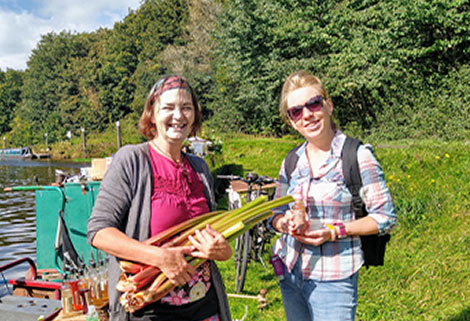 Consider Sam Keay, owner of Gangplank Spirits, whose loyal customers chase her around the countryside, bringing wild-gathered fruits in season to swap and flavour her gins and cordials. For years Sam says she was welcome wherever she went. With the pandemic and challenging times, however, she finds herself increasingly confronting licensing officials — five times this year — demanding she have a local street traders license, obliging her to cease doing business and move on down the Cut.
Consider Sam Keay, owner of Gangplank Spirits, whose loyal customers chase her around the countryside, bringing wild-gathered fruits in season to swap and flavour her gins and cordials. For years Sam says she was welcome wherever she went. With the pandemic and challenging times, however, she finds herself increasingly confronting licensing officials — five times this year — demanding she have a local street traders license, obliging her to cease doing business and move on down the Cut. Lindsey and Jeremy Morel, owners of the Floating Boulangerie, are the exception that proves the rule. Based in Kings Cross during lockdown, customers queued for two hours to buy their bread. Their calendar was crammed with £20 breakfast reservations. They were the picture of a successful enterprise, with thousands of followers on Instagram and testimonials from people who’d cycle 30 km to buy a croissant. Film students made videos about them. But lockdown ended and CRT demanded they relocate far from Central London.
Lindsey and Jeremy Morel, owners of the Floating Boulangerie, are the exception that proves the rule. Based in Kings Cross during lockdown, customers queued for two hours to buy their bread. Their calendar was crammed with £20 breakfast reservations. They were the picture of a successful enterprise, with thousands of followers on Instagram and testimonials from people who’d cycle 30 km to buy a croissant. Film students made videos about them. But lockdown ended and CRT demanded they relocate far from Central London. 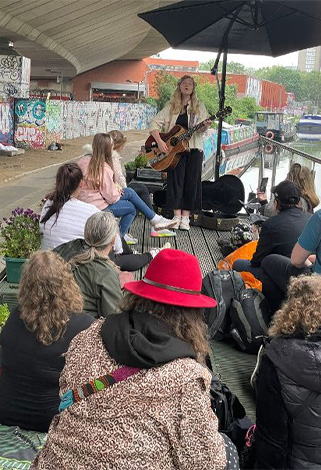 That’s the essence of Brigadoon!, which launches this week. Inspired by the mythical Scottish Highland village which magically appears every 100 years, this Brigadoon — with music, theatre, workshops and roving traders — will appear every two weeks along the canal.
That’s the essence of Brigadoon!, which launches this week. Inspired by the mythical Scottish Highland village which magically appears every 100 years, this Brigadoon — with music, theatre, workshops and roving traders — will appear every two weeks along the canal. 

